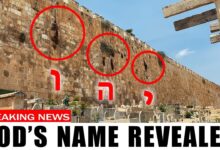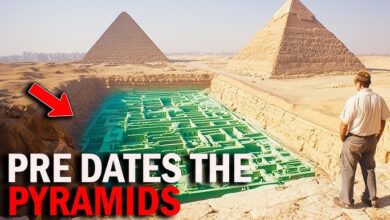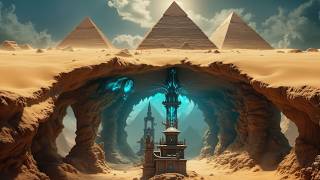Hidden Secrets of the Bent Pyramid Seen for the First Time

The passage describes the process of discovering the mysteries of the ancient Egyptian Pyramids, specifically the discovery of a secret space within the Pyramid. Here is a more detailed summary of the main content of the passage:
The video explores ancient history, specifically the Bent Pyramid. The narrator explains the challenges in discovering the design of the Pyramid due to damage over time and unimpressive discoveries from recently opened spaces. However, in this video, they will explore a little-studied space within the Bent Pyramid, which provides important information about how the Pyramids were built and used.
The narrator also discusses the lack of interest in pyramid architecture by Egyptologists, due to their greater focus on hieroglyphic texts. The Bent Pyramid has two separate chamber systems, which makes it a highlight in the study of ancient Egyptian architecture.
In particular, they will take a close look at a structure called the “chimney” in the Bent Pyramid, which has been a point of contention because its purpose is unclear. Ultimately, the video promises to provide direct evidence that will help solve the mystery of this structure and provide more information about the design of the Bent Pyramid, as well as how other pyramids may have been used.
Monier believes that the Bent Pyramid, built under Pharaoh Sneferu, was a failure. He suggests that the pyramid’s tilt was altered during construction due to concerns about its stability. Central to this theory is a chimney in the interior structure, which Monier believes was an abandoned ramp. The existence of this chimney, he argues, is evidence of a design or construction error, when the ancient Egyptians realized the structure was unstable and were forced to adjust their plans.
Monier used lidar (Light Detection and Ranging) scanning technology to study the structure of the Bent Pyramid. Lidar uses laser light to measure distances and create detailed 3D images of surfaces, allowing archaeologists to explore hidden structures within the pyramid without digging. Using this technology, Monier discovered small flaws within the structure, especially in the chimney, which he believed to be evidence of his theory of failure.
The author of the passage refutes Monier’s theory by highlighting the illogical points in his observations and analysis. First, the stone block in the chimney that Monier claimed was left unfinished shows no signs of having been intended to be toppled or removed. Instead, the block is still firmly fixed to the walls with plaster, indicating that it has not been destroyed or altered after it was built.
Second, the walls surrounding the block show that they have been finished with great care, with no signs of hasty repairs or hasty construction. This negates Monier’s view that the chimney is a design flaw. Critics argue that the stone was part of the original design and may have served a spiritual or religious purpose, rather than being an abandoned or failed structure.
The structure of pyramids often carried religious and spiritual significance in ancient Egyptian culture. For the Egyptians, pyramids were not only tombs for the Pharaohs, but also symbols of eternity and the passage of souls. The chimney may not have been used for practical purposes, but rather to represent a spiritual passage or as part of an elaborate burial ritual.
Therefore, Monier’s view of this as an engineering failure may stem from his lack of understanding of the pyramid’s cultural and spiritual values. While the changes to the angle of inclination in the design may have been for engineering reasons to increase stability, that does not mean that the entire structure was a failure. In contrast, the Bent Pyramid still stands today and is considered a major achievement in the history of ancient Egyptian architecture.
Monier’s theory of the Bent Pyramid seems to have been left unproven. Although he relied on modern scientific and technological evidence such as lidar to find fault with the structure, detailed observations and actual analysis of the stone and surrounding walls suggest that the structure was not the failure he thought it was. Instead, ancient Egyptian religious and cultural factors may better explain the true purpose of structures such as chimneys, shedding further light on the significance of the Bent Pyramid in Egyptian history.








